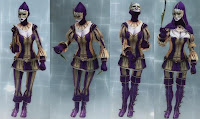Cosplay and Costumer
Cosplay (コスプレ), short for "costume play", is a type of performance art in which participants don costumes and accessories to represent a specific character or idea. Characters are often[citation needed] drawn from popular fiction in Japan. Favorite sources include manga, anime, tokusatsu, comic books, graphic novels, video games, hentai and fantasy movies. Role play includes portrayals of J-pop and J-rock stars, Taiwanese puppet characters, science fiction characters, characters from musical stories, classic novels, and entertainment software. Any entity from the real or virtual world that lends itself to dramatic interpretation may be taken up as a subject. Inanimate objects are given anthropomorphic forms and it is not unusual to see genders switched, with women playing male roles and vice versa.
Costume Designer or Costumer is a person whose responsibility is to design costumes for a film or stage production. He or she is considered an important part of the "production team", working alongside the director, scenic and lighting designers as well as the sound designer. The costume designer might also collaborate with a hair/wig master or a makeup designer. In European theatre the role is somewhat different as the theatre designer will design both costume and scenic elements.
Costume designers will typically seek to enhance a character's personality, and/or to create an evolving plot of colour, changing social status or period through the visual design of garments and other means of dressing, distorting and enhancing the body - within the framework of the director's vision. At the same time, the designer must ensure that the designs allow the actor to move in a manner consistent with the historical period and enables the actor to execute the director's blocking of the production without damage to the garments. Additional considerations include the durability and washability of garments, particularly in extended runs. The designer must work in consultation with not only the director, but the set and lighting designers to ensure that the overall design of the production works together. The designer needs to possess strong artistic capabilities as well as a thorough knowledge of pattern development, draping, drafting, textiles and costume/fashion history as well as awareness of poise when in period dress, and be sensitive to the creative direction that the performer wants to take his/her character.
- Cited from Wikipedia











